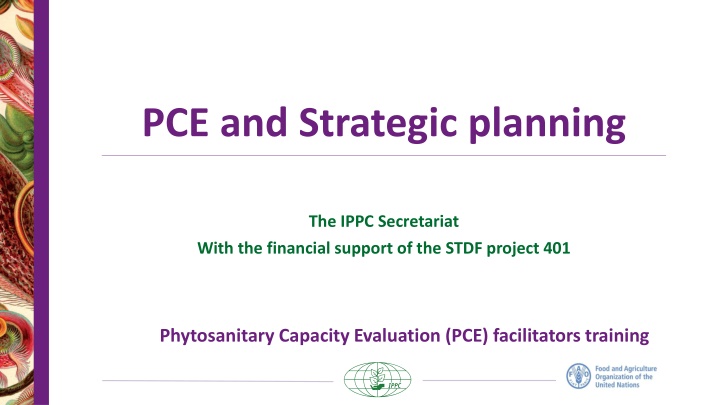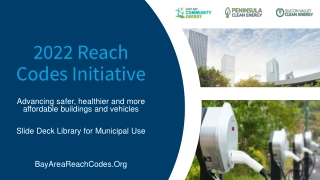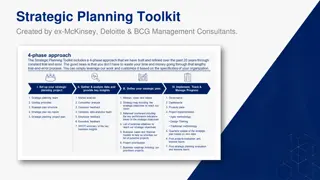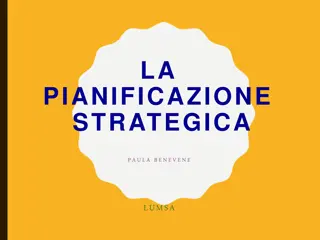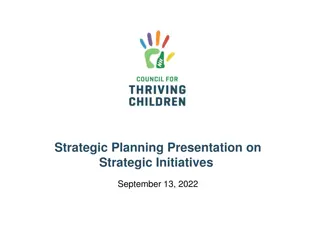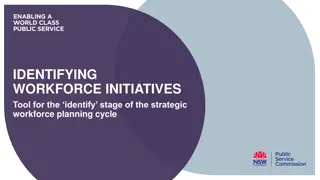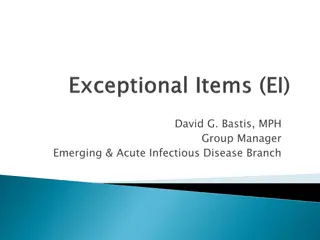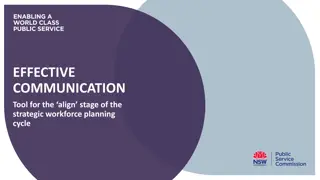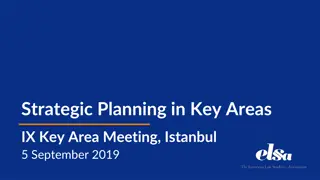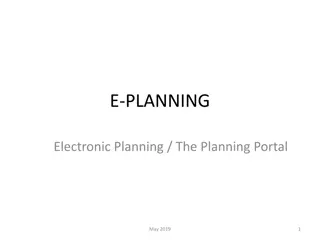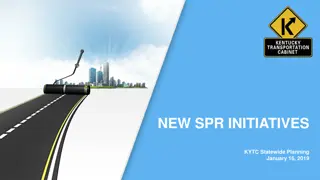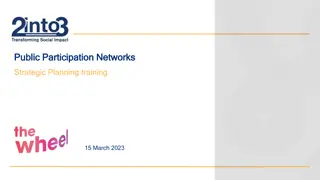PCE and Strategic Planning Initiatives
The IPPC Secretariat, with the financial support of the STDF project, is conducting training sessions on Phytosanitary Capacity Evaluation (PCE) and strategic planning. The content covers stakeholder analysis, problem analysis, needs assessment, SWOT analysis, and the project cycle. It emphasizes aspects such as prioritization of actions, action planning, resource mobilization, and logical framework development to enhance phytosanitary capacities. The training aims to equip facilitators with essential skills for effective implementation and monitoring of initiatives related to plant health and international trade facilitation.
Download Presentation

Please find below an Image/Link to download the presentation.
The content on the website is provided AS IS for your information and personal use only. It may not be sold, licensed, or shared on other websites without obtaining consent from the author.If you encounter any issues during the download, it is possible that the publisher has removed the file from their server.
You are allowed to download the files provided on this website for personal or commercial use, subject to the condition that they are used lawfully. All files are the property of their respective owners.
The content on the website is provided AS IS for your information and personal use only. It may not be sold, licensed, or shared on other websites without obtaining consent from the author.
E N D
Presentation Transcript
PCE and Strategic planning The IPPC Secretariat With the financial support of the STDF project 401 Phytosanitary Capacity Evaluation (PCE) facilitators training
The project cycle Identification Planning Implementation Monitoring & Evaluation
STRATEGIC PLANNING PROCESS Stakeholder analysis Problem analysis (Cause and Effect) Prioritisation of actions Strategic Planning Action Planning Needs assessment Problem Identification Work plan development SWOT analysis Resource mobilisation Logical Framework
Stakeholder analysis Type of Inform Consult Partnership Control participation Stage in cycle Identification Donor, Technical Units Planning External Stakeholders Secondary stakeholders Implementation Donors External Stakeholders Donors, Secondary stakeholders, Primary stakeholders Project leaders Monitoring & Evaluation Donors Secondary stakeholders Project leaders, Secondary stakeholders, Primary stakeholders External consultants
Needs assessment/Situation or GAP analysis Questionnaires Surveys Focus groups Formal Consultations External consultants assessments Evaluation tools/methods Integrated methods
Problem analysis (Cause and Effect) Secondary Cause Primary Cause Weakness Primary Consequence Secondary Consequence There is a human resource problem for export certification in XYZ Delay in the issuance of phytosanitary certificates Increased exporters complains
SWOTs Strengths Weakness Opportunities Threats Actions Export development strategy is in place There is a human resource problem for export certification in XYZ Money from private sector investment available Private sector support lack luster because they are not confident in the services provided by the NPPO
Logical Framework Result chain Indicators Means of verification Assumptions and/or risks Goal National plant resources protected Purpose or objective An improved integrated phytosanitary system Outputs or results expected 1. 2. 3. 4. Activities 1.1 2.1 3.1 4.1
WORKPLAN Outputs Activity (s) Sub-Activity (s) costs Responsible entity deadline Output 1 1.1 1.1.1 1.2 1.2.1 Output 2 2.1 2.1 Output 3 3.1 3.1 Output 4 4.1 4.1
